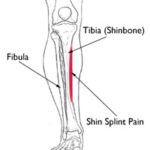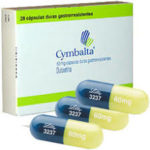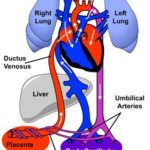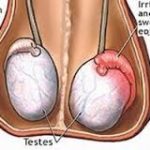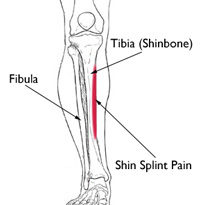Macrocytic Anemia
What is Macrocytic Anemia?
Macrocytic Anemia is a type of anemia whereby the red blood cells produced by the body are very few and their size appears to be larger than the normal ones. The occurrence of this type of anemia can hence be described as macrocytosis, which may or may not be as a result of anemia.

Macrocytosis without anemia occurs in very rare occassions and the red blood cells have a large appearance. It is not necessarily that those who are diagnosed with it have suffered from anemia before as in the case of pregnant mothers and infants whose erythrocyes are large. In the case of macrocytosis with anemia, there is presence of abnormal red blood cells in the patient’s blood.1,2
Common Symptoms
Patients with anemia and those who have shown potential of developing macrocytic anemia may express similar symptoms:
- Patients may appear weak or underweight and have poor appetite to any kind of food. Lack of eating may contribute to lack of body nutrients required for immunity and development.
- The skin around eyelids and lips has a pale appearance
- In most cases, victims lack full concentration and may look confused
- Their nails are not as strong as they should be but rather brittle and weak
- People with this condition are easily fatigued even without any activity
- Poor memory is also a common sign of macrocytic anemia
- They cannot hold their bowels and hence frequent diarrhea
- They may also suffer from breathing difficulties.
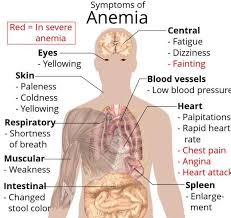
It should be realized that, if one experiences serious symptoms such as increased heartbeat and memory loss, medical attention should be sought immediately to avoid further effects.
Classification
This type of anemia can be classified into two:
- Megaloblastic anemia
- Non-megaloblastic anemia
A) Megaloblastic Anemia
It occurs as a result of a decrease in the levels of haemoglobin with Vitamin B12 and folic acid deficiency being the major causes. Lack of vitamin B12 in the body means low production of plateletes (thrombocytopenia) since they are the major requirement in production of red blood cells.
Causes
VitaminB12 may be deficient due to:
Dietary deficiency
which mostly occurs among vegeterians whose diet does not contain any type of animal protein. However, it is a rare causal factor since the liver can store the vitamin for long.
Bacterial accumulation
whereby, people may have conditions that may result in slow movement of food through the intestines hence leading to multiplication of bacteria. These bacteria consume vitamin B12, which is supposed to be absorbed into the body.
Surgery
- Especially in the stomach or intestines. People who have undergone this type of surgery have low levels of vitamin B12.
Pernicious anemia
- This occurs if protein secretion by cells in the stomach lining is absent. This protein is an intrinsic factorn which is essential for absorption of vitamin B12. It is most common among elderly since they tend to have thinner stomach lining.
HIV infection
People with this disease are most likely to have low levels of vitamin B12 in their body since they have more white blood cells as compared to the red ones. The medications they use to boost their immunity may also contribute to the decreased vitamins.2,3
Similarly, deficiency in folate can be as a result of the following:
- Lack of food rich in folic acid
- Increased intake of drugs
- Frequent excretion of urine as in the case of acute hepatisis
- Melabsorption.
Diagnosis
A peripheral blood smear can be done to check for megaloblastic anemia. This can only be done after the doctor has learnt about medical history of anemia in the family, eating habits, and lifestyle from the patient. Blood tests can then be performed during the process to check for underlying causes of anemia:
- In the case of megaloblastic anemia, the red blood cells may appear abnormal and large such that the nuclear material is widely dispersed showing a great difference in the cytoplasm and nucleus ratio. This kind of result shows low nutritional value.
- The bone marrow can also be examined to check for cell abnormalities and is only performed on anemic patients. Positive results will display proliferated myeloid cells while other cells will be immature.
- To check for pernicious anemia, a positive result is when high levels of antibodies are observed in the blood, which means there is lack of the intrinsic factor for vitamin B12 absorption.
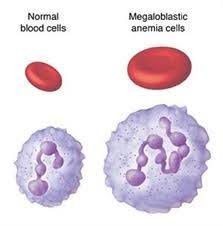
Treatment
- Cobalamin treatment and folic acid are the most recommended for this type of anemia. The old people can be very vulnerable and hence it is advised that one should be cautious when adminstering treatment to these group of patients.
- Transfusion therapy is recommended, especially in the case of severe situations that can be life threatening
- It is important to observe directions given by a doctor, especially for cobalamin, which should be administered daily for a period of two weeks until situations get to normal after which it is done after every one week. After observing the first two applications effectively, the treatment is then done after one month for the rest of the patients life
- Haemophilic patients should be given cobalamin orally to avoid cases of intramuscular bleeding when injected. Intramuscular treatment should only be for those with neurological complications
- Perinatal, lactating and pregnant mothers are advised to observe intake of folic acid foods
- Monitoring of patients is important even after they feel better
- During treatment, the level of serum potassium may fall, therefore necessary supplements for pottassium should be given to patients.
B) Non-megaloblastic Anemia
With this type, the red blood cells appear round in shape unlike in megaloblastic where they are oval. It is mostly observed in cases of hemolytic anemia where cholesterol is deposited in the membrane of the red blood cells leading to their enlargement and destruction.
Causes
It is commonly due to:
Chronic alcoholism
Excessive intake of alcohol reduces the production of red blood cells and especially those suffering from nutritional deficiencies.
Liver disease
patients who suffer from liver complications have cholesterol in the membranes of the red blood cells. They therefore have immature cells with projections and irregular surfaces, which may result in poor performance which is as a result of rapid cell turnovers.
Prevention
Severe cases of macrocytic anemia can be avoided by:
- Consumption of food rich in vitamin B12 at least in two meals. These foods include chicken, eggs, fish, red meat and fortified grains
- Vegetarians can add plant protein to their diet such as beans and other foods with folic acid such as lentils, oranges and dark leafy greens
- Reduce or avoid alcohol consumption and mostly, especially if you suffer from nutritional deficiency
- Patients under anti-retroviral and anti-seizures, and those undergoing chemotherapy should make it known to their doctors as these medications may accelerate occurrence of macrocytic anemia.
Reference List
- Macrocytic Anemia: Symptoms, Types and Treatment- Healthline. Available at
- www.healthline.com/health/macrocytic-anemia
- Macrocytic Anemia: A review. Available at
- www.entomoljournal.com/archives/2016/vol4issues5/partH/4-5-39-992pdf
- Macrocytosis and Macrocytic Anemia. Available at
- https://patient.info/doctor/macrocytosis-and-macrocytic-anaemia

